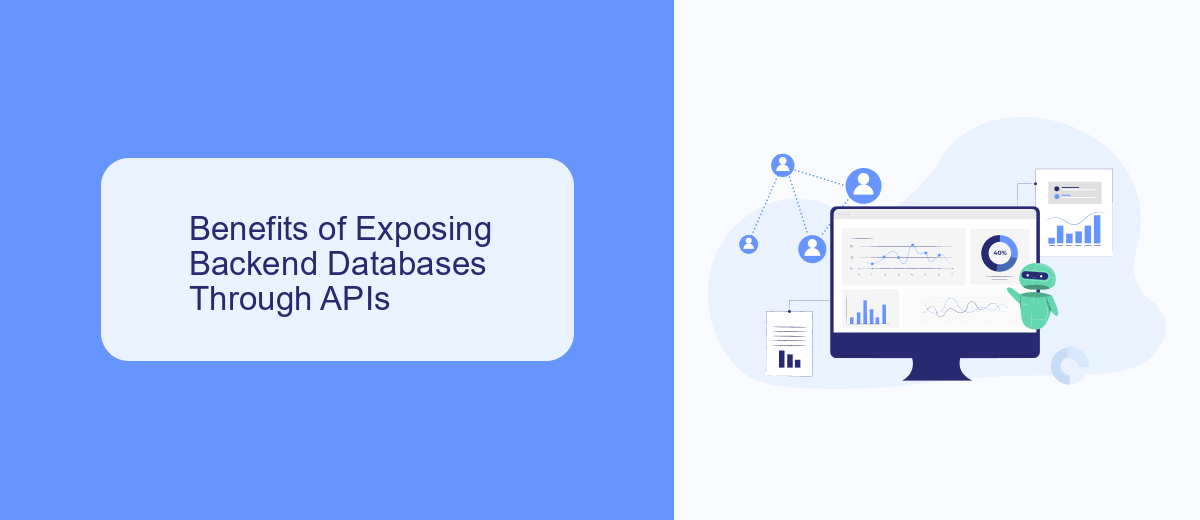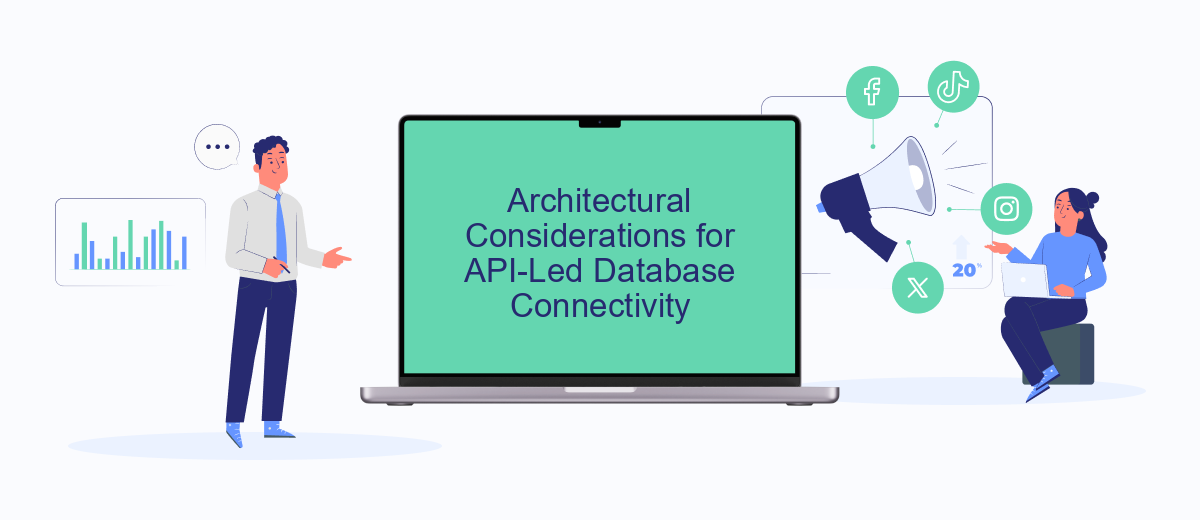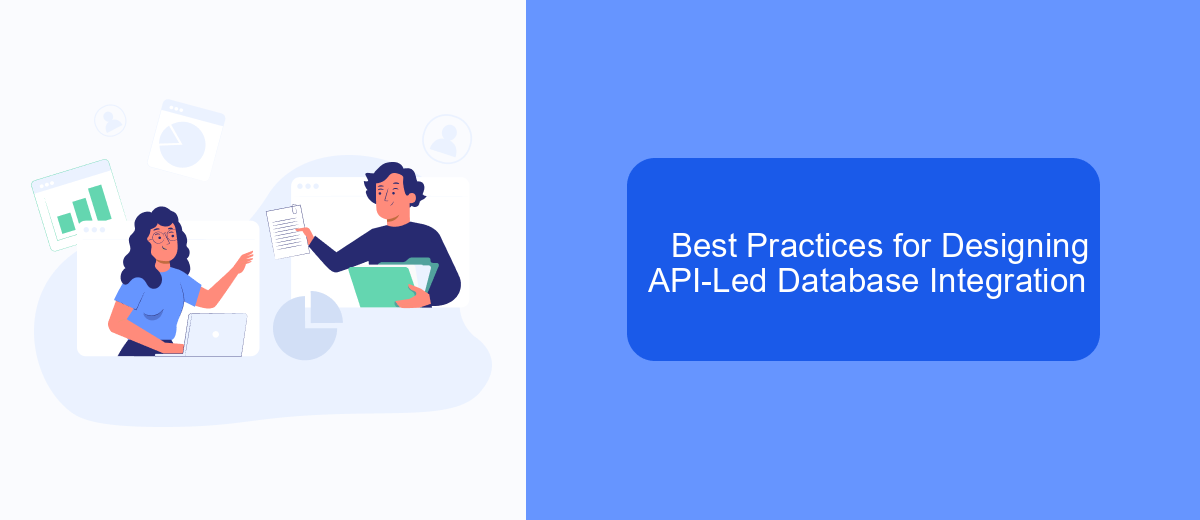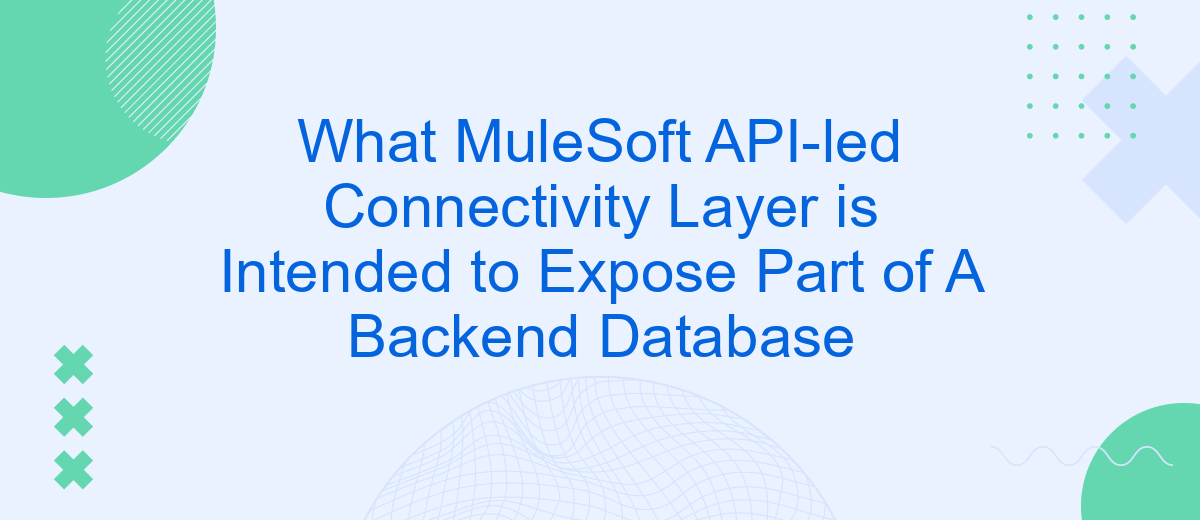MuleSoft's API-led connectivity approach is revolutionizing how businesses integrate and expose backend systems. By leveraging APIs, MuleSoft facilitates seamless access to backend databases, enabling efficient data sharing and integration. This article delves into the specifics of how MuleSoft's API-led connectivity layer is designed to expose critical parts of a backend database, enhancing operational efficiency and driving innovation.
Introduction to MuleSoft API-Led Connectivity Layer
MuleSoft's API-led connectivity approach revolutionizes how organizations interact with their backend systems. By leveraging APIs as the foundational building blocks, this strategy ensures seamless integration, scalability, and flexibility. It allows businesses to unlock the potential of their backend databases, making data accessible and reusable across various applications and services.
- System APIs: Directly access core systems of record.
- Process APIs: Orchestrate data and processes across systems.
- Experience APIs: Tailor data for specific user experiences.
This layered approach not only simplifies integration but also accelerates digital transformation. For instance, services like SaveMyLeads can be integrated to automate lead management processes, enhancing efficiency and responsiveness. By utilizing MuleSoft's API-led connectivity, organizations can create a more agile and responsive IT environment, capable of adapting to evolving business needs.
Benefits of Exposing Backend Databases Through APIs

Exposing backend databases through APIs offers numerous benefits, primarily enhancing the accessibility and usability of data across various applications. By leveraging APIs, businesses can ensure that their data is readily available to different systems, facilitating seamless integration and interaction. This not only improves efficiency but also enables real-time data exchange, which is crucial for making informed decisions and maintaining a competitive edge.
Moreover, APIs provide a layer of security and control over data access, allowing organizations to define specific permissions and manage data exposure effectively. Services like SaveMyLeads can streamline the integration process by automating data transfers between different platforms, reducing the need for manual interventions and minimizing the risk of errors. This ultimately leads to more reliable and consistent data management, empowering businesses to harness the full potential of their backend databases.
Architectural Considerations for API-Led Database Connectivity

When designing API-led connectivity for exposing parts of a backend database, several architectural considerations must be taken into account to ensure efficiency, security, and scalability. The architecture should be robust enough to handle various data integration scenarios while maintaining optimal performance.
- Security: Ensure that all API endpoints are secured using industry-standard authentication and authorization mechanisms. This includes implementing OAuth2, JWT, and other security protocols to prevent unauthorized access.
- Scalability: Design the API architecture to handle varying loads and scale horizontally. Use load balancers and consider cloud-native solutions to manage traffic spikes efficiently.
- Data Transformation: Incorporate data transformation layers to convert backend database formats into API-friendly formats. Tools like MuleSoft's DataWeave can be instrumental in achieving this.
- Integration Services: Utilize integration services like SaveMyLeads to streamline data flow between different systems. This can automate data synchronization and reduce manual intervention.
- Monitoring and Logging: Implement comprehensive monitoring and logging mechanisms to track API performance and troubleshoot issues. Use tools like ELK Stack or Prometheus for real-time insights.
By considering these architectural elements, organizations can build a resilient and efficient API-led connectivity layer. This not only enhances data accessibility but also ensures that backend systems remain secure and performant under various operational conditions.
Best Practices for Designing API-Led Database Integration

When designing API-led database integration, it is essential to ensure that the architecture is both scalable and maintainable. This involves careful planning and adherence to best practices to optimize performance and security. MuleSoft's API-led connectivity approach can significantly streamline this process by providing a structured method for exposing backend databases.
One of the key considerations is to establish clear data governance policies. This includes defining who has access to what data and under what conditions. Additionally, you should ensure that your APIs follow RESTful principles and are well-documented to facilitate ease of use and integration.
- Use standardized data formats like JSON or XML to ensure compatibility.
- Implement robust authentication and authorization mechanisms.
- Leverage API gateways to manage and monitor API traffic.
- Utilize services like SaveMyLeads to automate data synchronization tasks.
By following these best practices, you can create a resilient API-led database integration that not only meets current needs but is also adaptable to future requirements. This approach not only enhances data accessibility but also improves overall system efficiency and security.
Use Cases and Examples of API-Led Database Connectivity
API-led database connectivity is crucial for streamlining business operations by exposing backend databases to various applications. One common use case is integrating customer relationship management (CRM) systems with backend databases to ensure real-time data synchronization. For instance, integrating Salesforce with a backend database allows sales teams to access up-to-date customer information, enhancing decision-making and customer service. Another example is e-commerce platforms connecting to inventory databases to provide accurate stock levels to customers, thereby improving the shopping experience and reducing the risk of overselling.
In addition to these use cases, services like SaveMyLeads can simplify the integration process by automating data transfer between different platforms. For example, SaveMyLeads can be used to automatically sync leads from Facebook Ads to a backend database, ensuring that marketing teams have immediate access to new leads without manual data entry. This not only saves time but also reduces the risk of errors, making it easier for businesses to maintain accurate and up-to-date records. Overall, API-led connectivity enhances operational efficiency and data accuracy across various business processes.
FAQ
What is the purpose of the Experience layer in API-led connectivity?
How does the Process layer function in API-led connectivity?
What role does the System layer play in API-led connectivity?
Why is it important to use a service like SaveMyLeads for API integrations?
Can API-led connectivity improve the scalability of my applications?
What do you do with the data you get from Facebook lead forms? Do you send them to the manager, add them to mailing services, transfer them to the CRM system, use them to implement feedback? Automate all of these processes with the SaveMyLeads online connector. Create integrations so that new Facebook leads are automatically transferred to instant messengers, mailing services, task managers and other tools. Save yourself and your company's employees from routine work.
